-
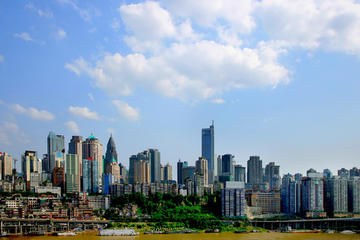 Chongqing
Chongqing Cascading over the cliffs where the Yangtze and Jialing Rivers meet is the city of Chongqing: the biggest metropolitan area in the world. The city, famous for its foggy days, steep streets, and spicy cuisine, is typically the first or last stop for cruises through the Three Gorges along
Chongqing
Chongqing Cascading over the cliffs where the Yangtze and Jialing Rivers meet is the city of Chongqing: the biggest metropolitan area in the world. The city, famous for its foggy days, steep streets, and spicy cuisine, is typically the first or last stop for cruises through the Three Gorges along
-
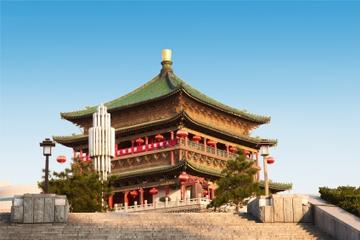 Bell Tower (Zhonglou)
Bell Tower (Zhonglou) The word “tower” doesn’t quite do justice to the enormous structure of the Xian Bell Tower - or Zhonglou, rising on an imposing square base to a series of terraces and three graceful pagoda roofs. This is nothing less than the symbol of Xian, positioned at the meeting point o
Bell Tower (Zhonglou)
Bell Tower (Zhonglou) The word “tower” doesn’t quite do justice to the enormous structure of the Xian Bell Tower - or Zhonglou, rising on an imposing square base to a series of terraces and three graceful pagoda roofs. This is nothing less than the symbol of Xian, positioned at the meeting point o
-
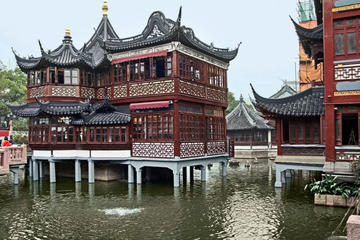 Shanghai Old Town (Nanshi)
Shanghai Old Town (Nanshi) At first glance the Old Town of Shanghai might seem like just another tourist trap, but Nanshi, as it used to be called (or Southern Town as most of the residents of the city call it) has a genuinely fascinating history. This part of town predates the colonial presence i
Shanghai Old Town (Nanshi)
Shanghai Old Town (Nanshi) At first glance the Old Town of Shanghai might seem like just another tourist trap, but Nanshi, as it used to be called (or Southern Town as most of the residents of the city call it) has a genuinely fascinating history. This part of town predates the colonial presence i
-
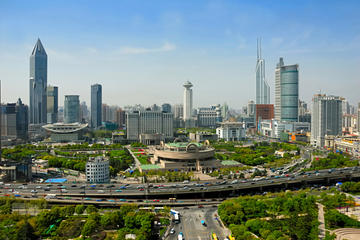 People’s Square (Renmin Guang Chang)
People’s Square (Renmin Guang Chang) Located in the heart of Shanghai, People’s Square (Renmin Guang Chang) is the home to the city’s municipal government headquarters and, more importantly, serves as a major landmark and meeting point in Shanghai. What was once an elite horse racing venue before
People’s Square (Renmin Guang Chang)
People’s Square (Renmin Guang Chang) Located in the heart of Shanghai, People’s Square (Renmin Guang Chang) is the home to the city’s municipal government headquarters and, more importantly, serves as a major landmark and meeting point in Shanghai. What was once an elite horse racing venue before
-
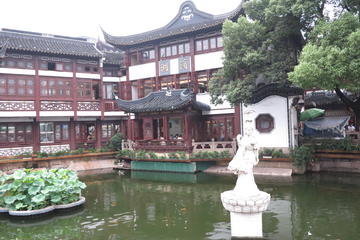 Yuyuan Garden
Yuyuan Garden The name of the Yuyuan Garden means Garden of Peace and Comfort, a slightly ironic moniker these days. Owing to its position in the center of the Old Town and its reputation as one of Chinas finest and best-preserved gardens, Yuyuan is crowded to bursting point every day. And yet, so
Yuyuan Garden
Yuyuan Garden The name of the Yuyuan Garden means Garden of Peace and Comfort, a slightly ironic moniker these days. Owing to its position in the center of the Old Town and its reputation as one of Chinas finest and best-preserved gardens, Yuyuan is crowded to bursting point every day. And yet, so
-
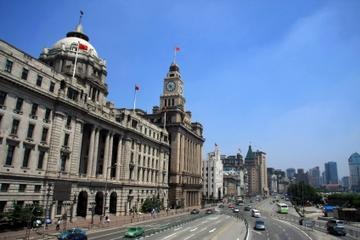 The Bund (Waitan)
The Bund (Waitan) The Bund (or Waitan) is the grand center of Colonial architecture in Shanghai. The former International Settlement runs along the waterfront of the Huangpu River, facing the Pudong district (Bund is a word of Indian derivation meaning embankment). Loosely known as the museum of i
The Bund (Waitan)
The Bund (Waitan) The Bund (or Waitan) is the grand center of Colonial architecture in Shanghai. The former International Settlement runs along the waterfront of the Huangpu River, facing the Pudong district (Bund is a word of Indian derivation meaning embankment). Loosely known as the museum of i
-
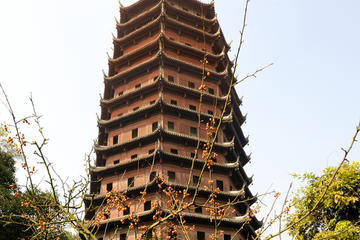 Six Harmonies Pagoda (Liuhe Pagoda)
Six Harmonies Pagoda (Liuhe Pagoda) A seven-story structure which looks deceivingly like 13 stories, the Six Harmonies Pagoda was constructed in 970 AD as part of an effort to ward off evil spirits believed to be responsible for the Qiantang River’s tidal bore. Though times of warfare ravaged the
Six Harmonies Pagoda (Liuhe Pagoda)
Six Harmonies Pagoda (Liuhe Pagoda) A seven-story structure which looks deceivingly like 13 stories, the Six Harmonies Pagoda was constructed in 970 AD as part of an effort to ward off evil spirits believed to be responsible for the Qiantang River’s tidal bore. Though times of warfare ravaged the
-
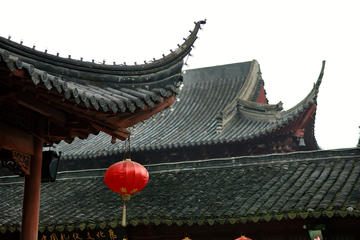 Temple of the Five Immortals (Wuxian Guan)
Temple of the Five Immortals (Wuxian Guan) According to legend, Guangzhou was founded when five immortal beings, three men and two women, descended upon the city during the reign of King Yi in the Zhou Dynasty. The five celestial beings rode on top of rams and brought with them rice and the valuab
Temple of the Five Immortals (Wuxian Guan)
Temple of the Five Immortals (Wuxian Guan) According to legend, Guangzhou was founded when five immortal beings, three men and two women, descended upon the city during the reign of King Yi in the Zhou Dynasty. The five celestial beings rode on top of rams and brought with them rice and the valuab
-
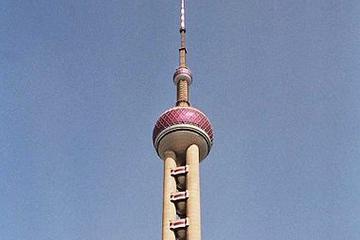 Oriental Pearl Tower (Dongfang Mingzhu Guangbo Dianshi Ta)
Oriental Pearl Tower (Dongfang Mingzhu Guangbo Dianshi Ta) The Oriental Pearl TV Tower once used to be the highest building in Shanghai, and its still up there. Its certainly one of the most hyperbolic and striking features of the horizon. Many people hate it; others have developed an odd affectio
Oriental Pearl Tower (Dongfang Mingzhu Guangbo Dianshi Ta)
Oriental Pearl Tower (Dongfang Mingzhu Guangbo Dianshi Ta) The Oriental Pearl TV Tower once used to be the highest building in Shanghai, and its still up there. Its certainly one of the most hyperbolic and striking features of the horizon. Many people hate it; others have developed an odd affectio
-
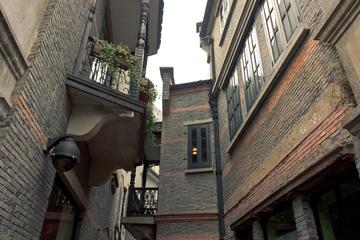 Old French Concession
Old French Concession Shanghai’s Old French Concession, an area once leased to the French in the Luwan and Xuhui districts of the city, is a reminder of an older Shanghai. The visitor-friendly area is packed full of beautiful colonial mansions and hotels dating back to the first three decades of t
Old French Concession
Old French Concession Shanghai’s Old French Concession, an area once leased to the French in the Luwan and Xuhui districts of the city, is a reminder of an older Shanghai. The visitor-friendly area is packed full of beautiful colonial mansions and hotels dating back to the first three decades of t
-
 Nanjing Lu (Nanjing Road)
Nanjing Lu (Nanjing Road) Nanjing Lu (Nanjing Road) is a shopping street with a history. When the British began trading in Shanghai after the Opium Wars of the 19th century, this was one of their commercial centers. In those days it was called Nanking Road, the k being a more popular form of Angli
Nanjing Lu (Nanjing Road)
Nanjing Lu (Nanjing Road) Nanjing Lu (Nanjing Road) is a shopping street with a history. When the British began trading in Shanghai after the Opium Wars of the 19th century, this was one of their commercial centers. In those days it was called Nanking Road, the k being a more popular form of Angli
-
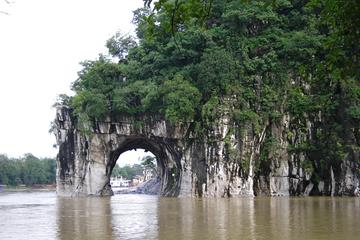 Elephant Trunk Hill (Xiangbishan)
Elephant Trunk Hill (Xiangbishan) Guilin’s most famous sight is a rocky outcrop on the Li River whose natural stone arch is said to mimic the moon in water. But the whole formation is better known for its resemblance to an elephant dipping its trunk in the river, from which it derives its name, El
Elephant Trunk Hill (Xiangbishan)
Elephant Trunk Hill (Xiangbishan) Guilin’s most famous sight is a rocky outcrop on the Li River whose natural stone arch is said to mimic the moon in water. But the whole formation is better known for its resemblance to an elephant dipping its trunk in the river, from which it derives its name, El
-
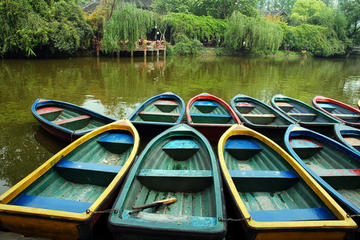 Renmin Park
Renmin Park Commonly known as “People’s Park” this lively open green space in southwest Chengdu is full of exactly that: people playing cards, people doing tai chi, people dancing and people squawking karaoke into microphones. Simply put, People’s Park is a people watcher’s dream.Famous for its po
Renmin Park
Renmin Park Commonly known as “People’s Park” this lively open green space in southwest Chengdu is full of exactly that: people playing cards, people doing tai chi, people dancing and people squawking karaoke into microphones. Simply put, People’s Park is a people watcher’s dream.Famous for its po
-
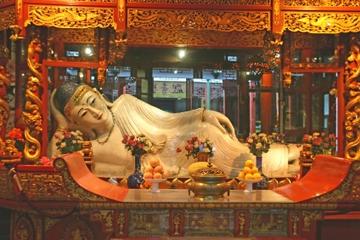 Jade Buddha Temple (Yufo Si)
Jade Buddha Temple (Yufo Si) Yufo Si is a working Buddhist community - one of the few in China - but the star attractions of the Jade Buddha Temple are two figures brought to Shanghai by a Burmese monk in the 19th century. The most impressive is the sitting Buddha, a 1.9 m (6.5 ft) giant enc
Jade Buddha Temple (Yufo Si)
Jade Buddha Temple (Yufo Si) Yufo Si is a working Buddhist community - one of the few in China - but the star attractions of the Jade Buddha Temple are two figures brought to Shanghai by a Burmese monk in the 19th century. The most impressive is the sitting Buddha, a 1.9 m (6.5 ft) giant enc
-
 Tiananmen Square (Tiananmen Guangchang)
Tiananmen Square (Tiananmen Guangchang) Tiananmen Square, or Tiananmen Guangchang, has always been not so much a square as a symbol. Mao built it to flaunt the epic scale of the Communist project. After the 1989 pro-democracy rallies that ended up in the massacre of protesters in the streets leadi
Tiananmen Square (Tiananmen Guangchang)
Tiananmen Square (Tiananmen Guangchang) Tiananmen Square, or Tiananmen Guangchang, has always been not so much a square as a symbol. Mao built it to flaunt the epic scale of the Communist project. After the 1989 pro-democracy rallies that ended up in the massacre of protesters in the streets leadi
-
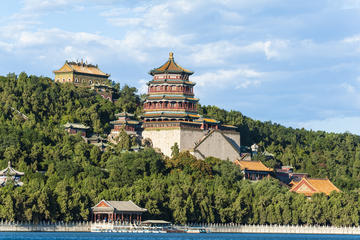 Summer Palace (Yiheyuan)
Summer Palace (Yiheyuan) The Summer Palace - also known as Yiheyuan - was built in 1750. In those days, it was called the Garden of Clear Ripples, and was a lakeside oasis where the royal court could escape the dust and heat of the Forbidden City in summer. It was razed twice by foreign armies an
Summer Palace (Yiheyuan)
Summer Palace (Yiheyuan) The Summer Palace - also known as Yiheyuan - was built in 1750. In those days, it was called the Garden of Clear Ripples, and was a lakeside oasis where the royal court could escape the dust and heat of the Forbidden City in summer. It was razed twice by foreign armies an
-
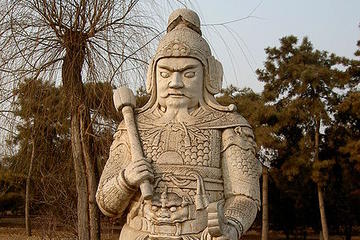 Ming Tombs (Ming Shisan Ling)
Ming Tombs (Ming Shisan Ling) The Ming Dynasty Tombs, or Ming Shisan Ling, are located outside of central Beijing and are home to the tombs and mausoleums of the Yongle Emperor. Currently, these tombs are a UNESCO World Heritage site, and are listed as part of the World Heritage object, Imperial T
Ming Tombs (Ming Shisan Ling)
Ming Tombs (Ming Shisan Ling) The Ming Dynasty Tombs, or Ming Shisan Ling, are located outside of central Beijing and are home to the tombs and mausoleums of the Yongle Emperor. Currently, these tombs are a UNESCO World Heritage site, and are listed as part of the World Heritage object, Imperial T
-
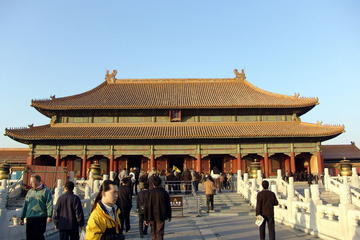 Forbidden City (Imperial Palace)
Forbidden City (Imperial Palace) Have you ever wondered whats so forbidden about the Forbidden City? Its called that because it was closed to the outside world for 500 years. This was the seat of the Ming and the Qing emperors, and no one could enter - or leave - the imperial domain without their
Forbidden City (Imperial Palace)
Forbidden City (Imperial Palace) Have you ever wondered whats so forbidden about the Forbidden City? Its called that because it was closed to the outside world for 500 years. This was the seat of the Ming and the Qing emperors, and no one could enter - or leave - the imperial domain without their
-
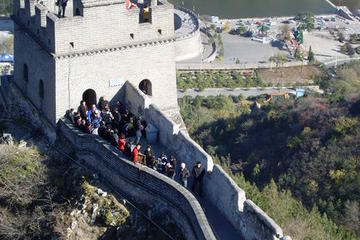 Great Wall of China
Great Wall of China The Great Wall of China is the greatest symbol of ancient Chinese engineering and one of the worlds most famous structures. Its name in Chinese means Long Fortress, and it was built to protect the northern edge of the Chinese empire against invasions from Mongolian nomads. All
Great Wall of China
Great Wall of China The Great Wall of China is the greatest symbol of ancient Chinese engineering and one of the worlds most famous structures. Its name in Chinese means Long Fortress, and it was built to protect the northern edge of the Chinese empire against invasions from Mongolian nomads. All
-
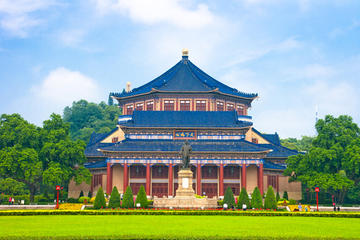 Sun Yat Sen Memorial Hall
Sun Yat Sen Memorial Hall Perched on the southern slope of Guangzhou’s Yuexiu Hill sits the Sun Yat Sen Memorial Hall, a monument built in 1931 in honor of the Chinese revolutionary. A bronze statue of Sun Yat Sen was erected in front of the Memorial hall several years later in 1956.Sun Yat Sen is
Sun Yat Sen Memorial Hall
Sun Yat Sen Memorial Hall Perched on the southern slope of Guangzhou’s Yuexiu Hill sits the Sun Yat Sen Memorial Hall, a monument built in 1931 in honor of the Chinese revolutionary. A bronze statue of Sun Yat Sen was erected in front of the Memorial hall several years later in 1956.Sun Yat Sen is
Total
2381 -travel
FirstPage PreviousPage NextPage LastPage CurrentPage:
12/120 20-travel/Page GoTo Page:
 Chongqing
Chongqing Cascading over the cliffs where the Yangtze and Jialing Rivers meet is the city of Chongqing: the biggest metropolitan area in the world. The city, famous for its foggy days, steep streets, and spicy cuisine, is typically the first or last stop for cruises through the Three Gorges along
Chongqing
Chongqing Cascading over the cliffs where the Yangtze and Jialing Rivers meet is the city of Chongqing: the biggest metropolitan area in the world. The city, famous for its foggy days, steep streets, and spicy cuisine, is typically the first or last stop for cruises through the Three Gorges along
 Bell Tower (Zhonglou)
Bell Tower (Zhonglou) The word “tower” doesn’t quite do justice to the enormous structure of the Xian Bell Tower - or Zhonglou, rising on an imposing square base to a series of terraces and three graceful pagoda roofs. This is nothing less than the symbol of Xian, positioned at the meeting point o
Bell Tower (Zhonglou)
Bell Tower (Zhonglou) The word “tower” doesn’t quite do justice to the enormous structure of the Xian Bell Tower - or Zhonglou, rising on an imposing square base to a series of terraces and three graceful pagoda roofs. This is nothing less than the symbol of Xian, positioned at the meeting point o
 Shanghai Old Town (Nanshi)
Shanghai Old Town (Nanshi) At first glance the Old Town of Shanghai might seem like just another tourist trap, but Nanshi, as it used to be called (or Southern Town as most of the residents of the city call it) has a genuinely fascinating history. This part of town predates the colonial presence i
Shanghai Old Town (Nanshi)
Shanghai Old Town (Nanshi) At first glance the Old Town of Shanghai might seem like just another tourist trap, but Nanshi, as it used to be called (or Southern Town as most of the residents of the city call it) has a genuinely fascinating history. This part of town predates the colonial presence i
 People’s Square (Renmin Guang Chang)
People’s Square (Renmin Guang Chang) Located in the heart of Shanghai, People’s Square (Renmin Guang Chang) is the home to the city’s municipal government headquarters and, more importantly, serves as a major landmark and meeting point in Shanghai. What was once an elite horse racing venue before
People’s Square (Renmin Guang Chang)
People’s Square (Renmin Guang Chang) Located in the heart of Shanghai, People’s Square (Renmin Guang Chang) is the home to the city’s municipal government headquarters and, more importantly, serves as a major landmark and meeting point in Shanghai. What was once an elite horse racing venue before
 Yuyuan Garden
Yuyuan Garden The name of the Yuyuan Garden means Garden of Peace and Comfort, a slightly ironic moniker these days. Owing to its position in the center of the Old Town and its reputation as one of Chinas finest and best-preserved gardens, Yuyuan is crowded to bursting point every day. And yet, so
Yuyuan Garden
Yuyuan Garden The name of the Yuyuan Garden means Garden of Peace and Comfort, a slightly ironic moniker these days. Owing to its position in the center of the Old Town and its reputation as one of Chinas finest and best-preserved gardens, Yuyuan is crowded to bursting point every day. And yet, so
 The Bund (Waitan)
The Bund (Waitan) The Bund (or Waitan) is the grand center of Colonial architecture in Shanghai. The former International Settlement runs along the waterfront of the Huangpu River, facing the Pudong district (Bund is a word of Indian derivation meaning embankment). Loosely known as the museum of i
The Bund (Waitan)
The Bund (Waitan) The Bund (or Waitan) is the grand center of Colonial architecture in Shanghai. The former International Settlement runs along the waterfront of the Huangpu River, facing the Pudong district (Bund is a word of Indian derivation meaning embankment). Loosely known as the museum of i
 Six Harmonies Pagoda (Liuhe Pagoda)
Six Harmonies Pagoda (Liuhe Pagoda) A seven-story structure which looks deceivingly like 13 stories, the Six Harmonies Pagoda was constructed in 970 AD as part of an effort to ward off evil spirits believed to be responsible for the Qiantang River’s tidal bore. Though times of warfare ravaged the
Six Harmonies Pagoda (Liuhe Pagoda)
Six Harmonies Pagoda (Liuhe Pagoda) A seven-story structure which looks deceivingly like 13 stories, the Six Harmonies Pagoda was constructed in 970 AD as part of an effort to ward off evil spirits believed to be responsible for the Qiantang River’s tidal bore. Though times of warfare ravaged the
 Temple of the Five Immortals (Wuxian Guan)
Temple of the Five Immortals (Wuxian Guan) According to legend, Guangzhou was founded when five immortal beings, three men and two women, descended upon the city during the reign of King Yi in the Zhou Dynasty. The five celestial beings rode on top of rams and brought with them rice and the valuab
Temple of the Five Immortals (Wuxian Guan)
Temple of the Five Immortals (Wuxian Guan) According to legend, Guangzhou was founded when five immortal beings, three men and two women, descended upon the city during the reign of King Yi in the Zhou Dynasty. The five celestial beings rode on top of rams and brought with them rice and the valuab
 Oriental Pearl Tower (Dongfang Mingzhu Guangbo Dianshi Ta)
Oriental Pearl Tower (Dongfang Mingzhu Guangbo Dianshi Ta) The Oriental Pearl TV Tower once used to be the highest building in Shanghai, and its still up there. Its certainly one of the most hyperbolic and striking features of the horizon. Many people hate it; others have developed an odd affectio
Oriental Pearl Tower (Dongfang Mingzhu Guangbo Dianshi Ta)
Oriental Pearl Tower (Dongfang Mingzhu Guangbo Dianshi Ta) The Oriental Pearl TV Tower once used to be the highest building in Shanghai, and its still up there. Its certainly one of the most hyperbolic and striking features of the horizon. Many people hate it; others have developed an odd affectio
 Old French Concession
Old French Concession Shanghai’s Old French Concession, an area once leased to the French in the Luwan and Xuhui districts of the city, is a reminder of an older Shanghai. The visitor-friendly area is packed full of beautiful colonial mansions and hotels dating back to the first three decades of t
Old French Concession
Old French Concession Shanghai’s Old French Concession, an area once leased to the French in the Luwan and Xuhui districts of the city, is a reminder of an older Shanghai. The visitor-friendly area is packed full of beautiful colonial mansions and hotels dating back to the first three decades of t
 Nanjing Lu (Nanjing Road)
Nanjing Lu (Nanjing Road) Nanjing Lu (Nanjing Road) is a shopping street with a history. When the British began trading in Shanghai after the Opium Wars of the 19th century, this was one of their commercial centers. In those days it was called Nanking Road, the k being a more popular form of Angli
Nanjing Lu (Nanjing Road)
Nanjing Lu (Nanjing Road) Nanjing Lu (Nanjing Road) is a shopping street with a history. When the British began trading in Shanghai after the Opium Wars of the 19th century, this was one of their commercial centers. In those days it was called Nanking Road, the k being a more popular form of Angli
 Elephant Trunk Hill (Xiangbishan)
Elephant Trunk Hill (Xiangbishan) Guilin’s most famous sight is a rocky outcrop on the Li River whose natural stone arch is said to mimic the moon in water. But the whole formation is better known for its resemblance to an elephant dipping its trunk in the river, from which it derives its name, El
Elephant Trunk Hill (Xiangbishan)
Elephant Trunk Hill (Xiangbishan) Guilin’s most famous sight is a rocky outcrop on the Li River whose natural stone arch is said to mimic the moon in water. But the whole formation is better known for its resemblance to an elephant dipping its trunk in the river, from which it derives its name, El
 Renmin Park
Renmin Park Commonly known as “People’s Park” this lively open green space in southwest Chengdu is full of exactly that: people playing cards, people doing tai chi, people dancing and people squawking karaoke into microphones. Simply put, People’s Park is a people watcher’s dream.Famous for its po
Renmin Park
Renmin Park Commonly known as “People’s Park” this lively open green space in southwest Chengdu is full of exactly that: people playing cards, people doing tai chi, people dancing and people squawking karaoke into microphones. Simply put, People’s Park is a people watcher’s dream.Famous for its po
 Jade Buddha Temple (Yufo Si)
Jade Buddha Temple (Yufo Si) Yufo Si is a working Buddhist community - one of the few in China - but the star attractions of the Jade Buddha Temple are two figures brought to Shanghai by a Burmese monk in the 19th century. The most impressive is the sitting Buddha, a 1.9 m (6.5 ft) giant enc
Jade Buddha Temple (Yufo Si)
Jade Buddha Temple (Yufo Si) Yufo Si is a working Buddhist community - one of the few in China - but the star attractions of the Jade Buddha Temple are two figures brought to Shanghai by a Burmese monk in the 19th century. The most impressive is the sitting Buddha, a 1.9 m (6.5 ft) giant enc
 Tiananmen Square (Tiananmen Guangchang)
Tiananmen Square (Tiananmen Guangchang) Tiananmen Square, or Tiananmen Guangchang, has always been not so much a square as a symbol. Mao built it to flaunt the epic scale of the Communist project. After the 1989 pro-democracy rallies that ended up in the massacre of protesters in the streets leadi
Tiananmen Square (Tiananmen Guangchang)
Tiananmen Square (Tiananmen Guangchang) Tiananmen Square, or Tiananmen Guangchang, has always been not so much a square as a symbol. Mao built it to flaunt the epic scale of the Communist project. After the 1989 pro-democracy rallies that ended up in the massacre of protesters in the streets leadi
 Summer Palace (Yiheyuan)
Summer Palace (Yiheyuan) The Summer Palace - also known as Yiheyuan - was built in 1750. In those days, it was called the Garden of Clear Ripples, and was a lakeside oasis where the royal court could escape the dust and heat of the Forbidden City in summer. It was razed twice by foreign armies an
Summer Palace (Yiheyuan)
Summer Palace (Yiheyuan) The Summer Palace - also known as Yiheyuan - was built in 1750. In those days, it was called the Garden of Clear Ripples, and was a lakeside oasis where the royal court could escape the dust and heat of the Forbidden City in summer. It was razed twice by foreign armies an
 Ming Tombs (Ming Shisan Ling)
Ming Tombs (Ming Shisan Ling) The Ming Dynasty Tombs, or Ming Shisan Ling, are located outside of central Beijing and are home to the tombs and mausoleums of the Yongle Emperor. Currently, these tombs are a UNESCO World Heritage site, and are listed as part of the World Heritage object, Imperial T
Ming Tombs (Ming Shisan Ling)
Ming Tombs (Ming Shisan Ling) The Ming Dynasty Tombs, or Ming Shisan Ling, are located outside of central Beijing and are home to the tombs and mausoleums of the Yongle Emperor. Currently, these tombs are a UNESCO World Heritage site, and are listed as part of the World Heritage object, Imperial T
 Forbidden City (Imperial Palace)
Forbidden City (Imperial Palace) Have you ever wondered whats so forbidden about the Forbidden City? Its called that because it was closed to the outside world for 500 years. This was the seat of the Ming and the Qing emperors, and no one could enter - or leave - the imperial domain without their
Forbidden City (Imperial Palace)
Forbidden City (Imperial Palace) Have you ever wondered whats so forbidden about the Forbidden City? Its called that because it was closed to the outside world for 500 years. This was the seat of the Ming and the Qing emperors, and no one could enter - or leave - the imperial domain without their
 Great Wall of China
Great Wall of China The Great Wall of China is the greatest symbol of ancient Chinese engineering and one of the worlds most famous structures. Its name in Chinese means Long Fortress, and it was built to protect the northern edge of the Chinese empire against invasions from Mongolian nomads. All
Great Wall of China
Great Wall of China The Great Wall of China is the greatest symbol of ancient Chinese engineering and one of the worlds most famous structures. Its name in Chinese means Long Fortress, and it was built to protect the northern edge of the Chinese empire against invasions from Mongolian nomads. All
 Sun Yat Sen Memorial Hall
Sun Yat Sen Memorial Hall Perched on the southern slope of Guangzhou’s Yuexiu Hill sits the Sun Yat Sen Memorial Hall, a monument built in 1931 in honor of the Chinese revolutionary. A bronze statue of Sun Yat Sen was erected in front of the Memorial hall several years later in 1956.Sun Yat Sen is
Sun Yat Sen Memorial Hall
Sun Yat Sen Memorial Hall Perched on the southern slope of Guangzhou’s Yuexiu Hill sits the Sun Yat Sen Memorial Hall, a monument built in 1931 in honor of the Chinese revolutionary. A bronze statue of Sun Yat Sen was erected in front of the Memorial hall several years later in 1956.Sun Yat Sen is